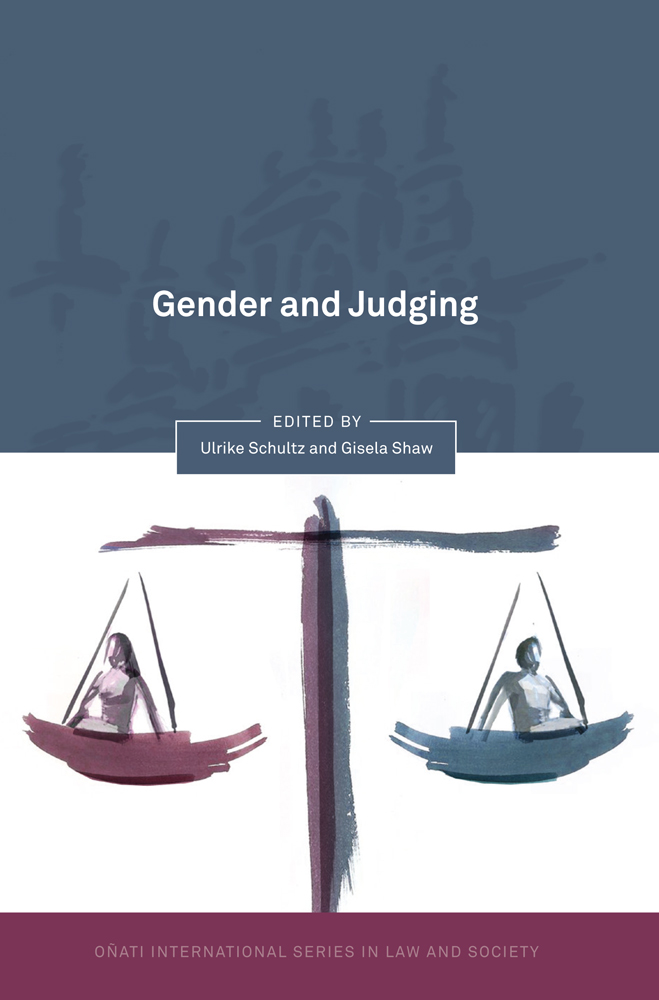 by Ulrike Schultz and Gisela Shaw, eds. Portland, OR: Hart Publishing, 2013. 640 pages. Hardback $100.00. ISBN 9781841136400.
by Ulrike Schultz and Gisela Shaw, eds. Portland, OR: Hart Publishing, 2013. 640 pages. Hardback $100.00. ISBN 9781841136400.Reviewed by Tara W. Stricko, Political Science, Kennesaw State University.
pp.214-215
GENDER AND JUDGING is a large compilation of essays focusing on a variety of women’s issues and gender related studies within various legal systems. The extremely broad focus with a plethora of approaches across nearly every general type of contemporary judiciary makes for an interesting but dense read. The majority of authors come from different fields including history, law (practice and teaching), psychology and sociology. Although they are accomplished individuals, their scholarship reflects their particular fields. Unfortunately this particular approach to research is going to be foreign or of limited utility to many of the Law and Politics Book Review readers based in the United States, since its approach does not mimic the heavily quantitative approach common in most of mainstream American political science. There is little presented in the way of quantitative evidence and even the qualitative studies are primarily loosely organized stories.
The authors cover nineteen countries across the world, half common law and half civil law. Five continents, including nations from the developing and developed worlds, are included. Subjects in order are: pioneers and eminent women judges, women judges’ work and careers, gender perspectives in judging, gendered construction of the judiciary, feminist judges and feminist adjudication, quotas and diversity, and gender training for the judiciary.
The book begins with a section on early pioneering judges. The experiences of early women judges in Canada, the United States, Israel, and Germany are highlighted. Although the judges face challenges the consensus throughout the chapters seems to be that these early adventurers did not follow a “playbook” and instead did what worked for them. The next section discusses legal processes and the female composition of the bench. Of particular importance is the notion of “women’s’ issues” which may or may not require the attention of a woman judge. These studies discuss the assumptions made regarding the necessity of female perspective in certain cases – especially those concerning family or domestic law.
The third and fourth sections discuss the effect of gender on judicial decisions, especially the impact that gender has on legal outcomes. Debate over stereotypical female traits and how they are expected to affect or do affect the bench are included. The fifth section covers the importance, limits, and connotations of the “feminist” label within the legal profession. . The important of feminism is then discussed. The sixth section deals with “forced diversity” especially regarding female judges and quotas. Echoing many of the arguments about affirmative action in the U.S. context, mandated diversity is a contentious issue. Finally the relationship between gender and legal [*215] education is covered including the impact of diverse perspectives on the legal profession.
Two chapters that are likely to be of greater interest to the LPBR audience are written by Sally J. Kenney and Elaine Martin. Martin’s chapter provides a nice summary of the career paths of three prominent female judges in the United States: Patricia M. Wald, Dorothy M. Nelson, and Rosemary Barkett. Kenney’s chapter review many studies examining the selection methods and percentages of female judges in the United States. She breaks down the previous studies into ten different categories. The explanations covered include culture, demographics, quality in the labor pool and gatekeepers, the size of the court, “breaking the mould”, credentials, homophobia, gatekeepers, use of “neutral” criteria, and finally lack of demand. Kenney then provides a nice summary of the literature on selection biases and concludes with a brief summary of a cross-national discussion of factors increasing sex diversity in other countries.
Many of the chapters raise interesting questions that could benefit from a more explicitly analytical approach. Although various sections examine different concepts, there appears to be only a loosely connected theory or a general focus throughout the book. To be fair, many of the authors are not trained political scientists and of course different research methods are acceptable in each’s specific subfield. This book is most likely to appeal to those who want to learn something about female judges and gender diversity within legal systems across the world. It will also interest those who are in gender studies. However the lack of an overarching cohesive theoretical framework and heavily qualitative orientation of the work will limit its audience among American political scientists.
Copyright 2014 by the Author, Tara W. Stricko.